
Highlights
- A system dynamics model for environmentally extended urban metabolism has been developed
- The model simulates spatial trade-offs subject to material circularity improvements
- Urban environmental impacts are mapped to supplier provinces and nations
- As material circularity increases, remote impacts wane, while increasing locally
- Major benefits are mostly located with more developed trading partners
Methodologies
This study, published in the Resources, Conservation and Recycling scientific journal aimed to model and assess the synergies and trade-offs brought upon by optimizing the circular metabolism of construction materials using an integrated spatio-temporally dynamic approach. The construction sector is the largest consumer of raw materials and resources, consuming 3 billion tonnes of raw materials annually and 50% of global steel production. The environmental consequences of construction, such as resource depletion and waste generation, can be viewed through the concept of metabolic rift, with waste not being part of natural cycles but rather generated by urban civilization. Addressing overconsumption and improving material circularity are crucial, especially in the construction sector, to reduce indirect environmental impacts.
Circular economy is seen as a solution to address extractive and wasteful linear supply chains by circulating outflows to inflows. This is measured using the Material Circularity Indicator (MCI).

This approach allows us to maximize the MCI for each material flow, thus characterizing an optimal circular urban metabolism profile. The following calculations measure the MCI (Eq. 1) and OMC (Eq. 2) using virgin (V), waste (W), mass (M) and utility (X).
Material flows (calculated from national and provincial statistics) and associated impacts (taken from life cycle assessment databases) are simulated from 2017 to 2050 under two scenarios: business as usual (BAU) and Optimized Material Circularity (OMC) based on the MCI. The relative potential benefits of the OMC scenario are then mapped over time. The locations of these benefits are then compared to the development level of those locations to understand how well distributed are the gains for those communities who need them most.
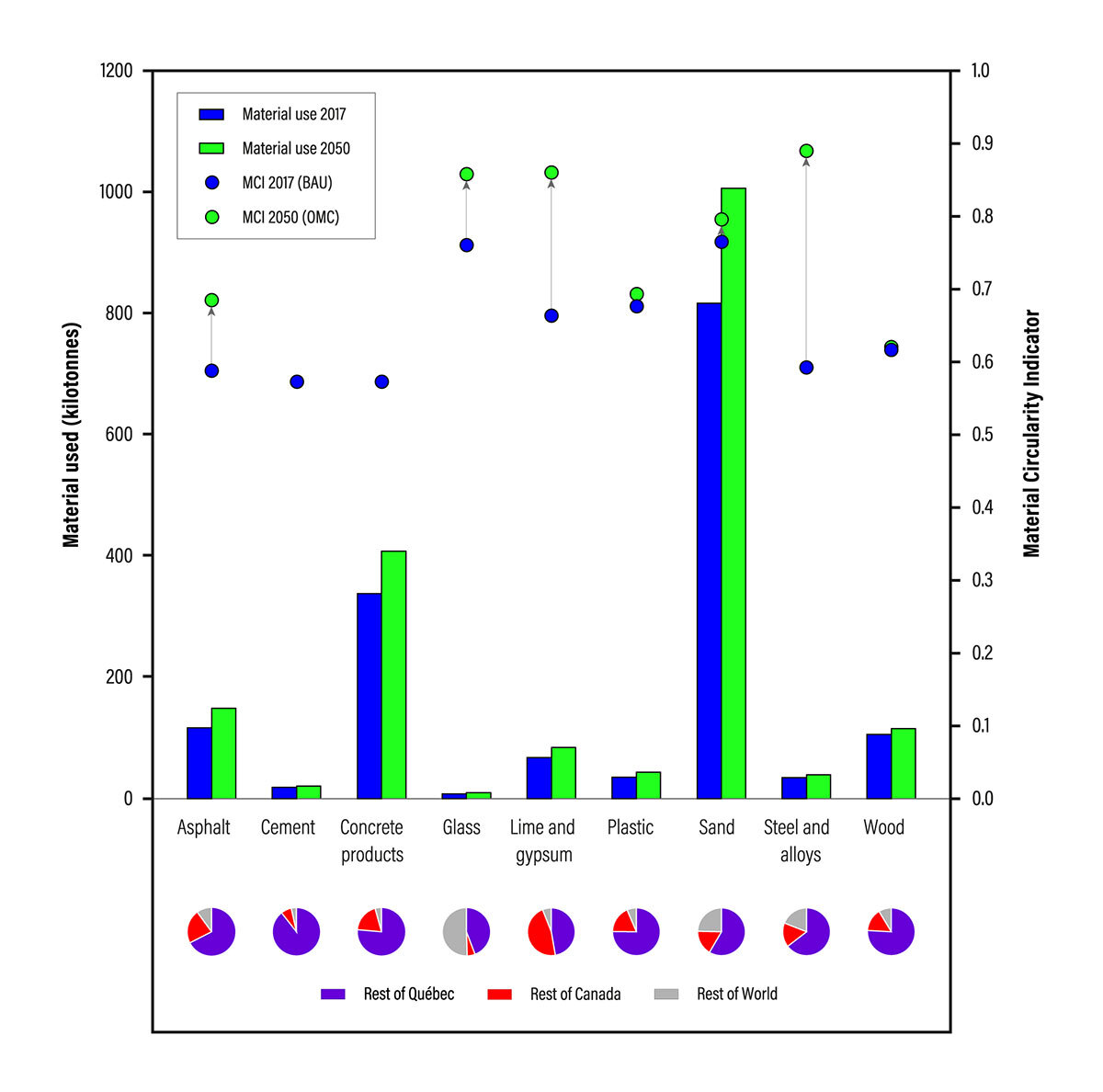
Modelling the success of circular economy initiatives is complex, and reducing virgin and waste flows can have unintended consequences. Designing buildings with reduced materiality encompasses strategies such as modularity, adaptability, and deconstruction, and circular buildings have been proposed as a holistic approach to circular economy in the built environment.
A system dynamics urban metabolism model is used to estimate the effects of increasing material circularity, with a case study focusing on Montréal. As material circularity increases, impacts decrease in supplier regions (provinces and nations), but increase, albeit to a much lesser extent, in the city, due to activities associated with second life recovery. However, this decrease of impacts in supplier regions is spatially uneven, revealing potential environmental justice risks between highly developed and lower developed countries.
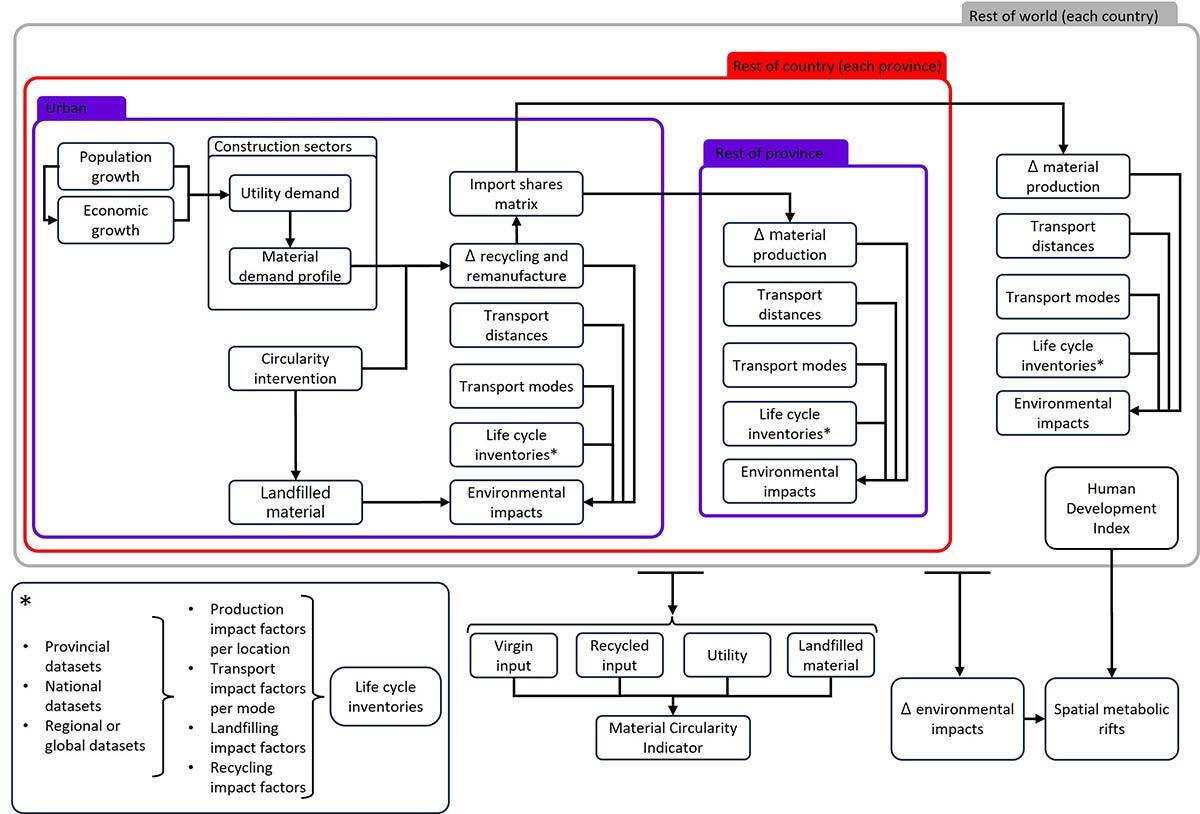
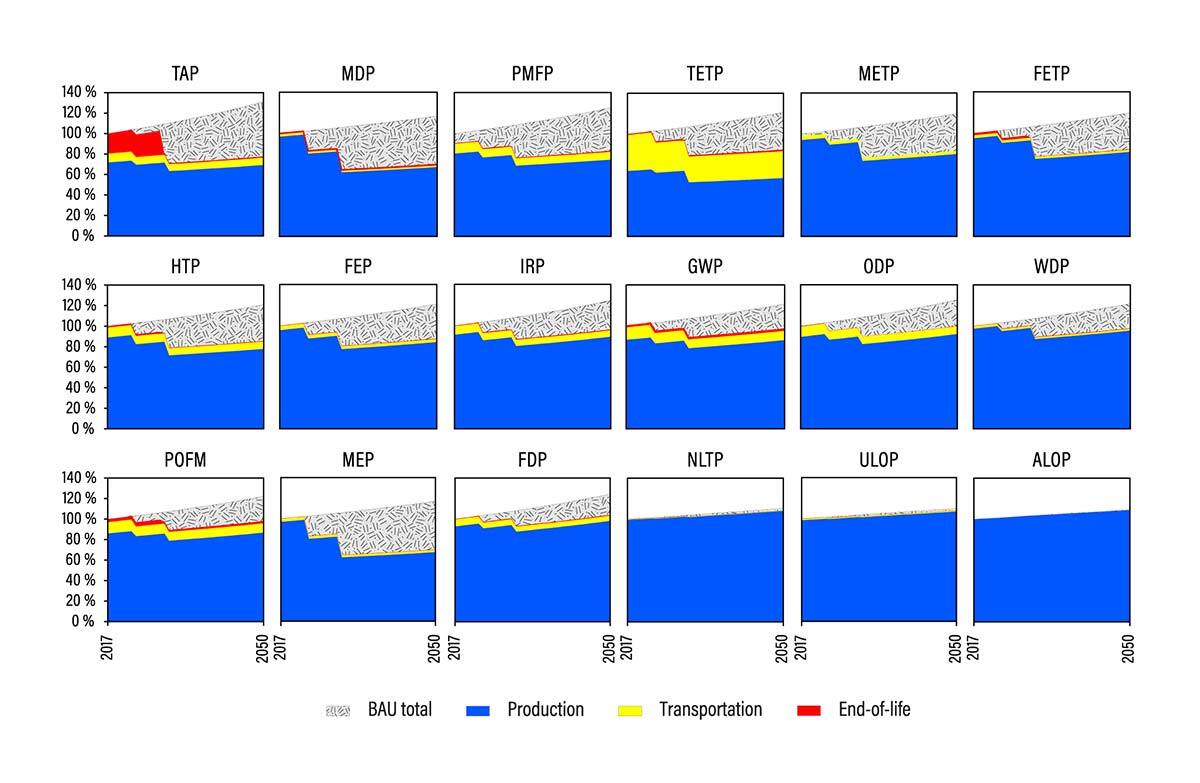
Results show that increasing material circularity reduces environmental impacts, but also leads to spatial burden-shifting and potential environmental injustice. The main benefactors of Montréal’s material circularization are not the residents of Montréal, but those located in supplier nations, especially Brazil, Mexico, and Norway—for whom environmental impacts decrease between 80-100% by 2050 in all 18 impact categories. However, Montrealers will directly benefit from some of these distal reductions as their impact is global and does not depend on where emissions are, as is the case with climate change. This highlights the need for a systemic view on the entire life cycle of buildings and the importance of balancing the benefits and trade-offs of material circularity.
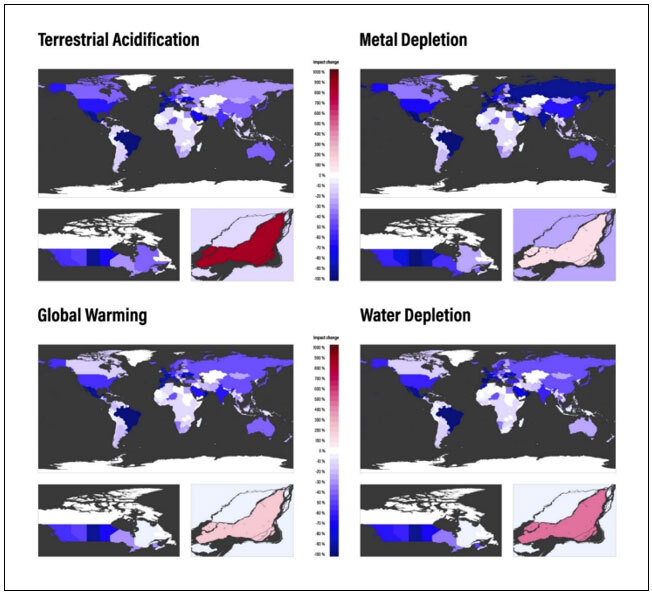
Benefits gained by the supplier nations through the optimal material circularity scenario are grouped by those nations’ Human Development Index (HDI). This shows that the reduced environmental burdens most strongly benefits those countries with higher development levels. In this case, the less developed trading partners reap smaller benefits from a potential increase in Montreal’s construction material circularity.
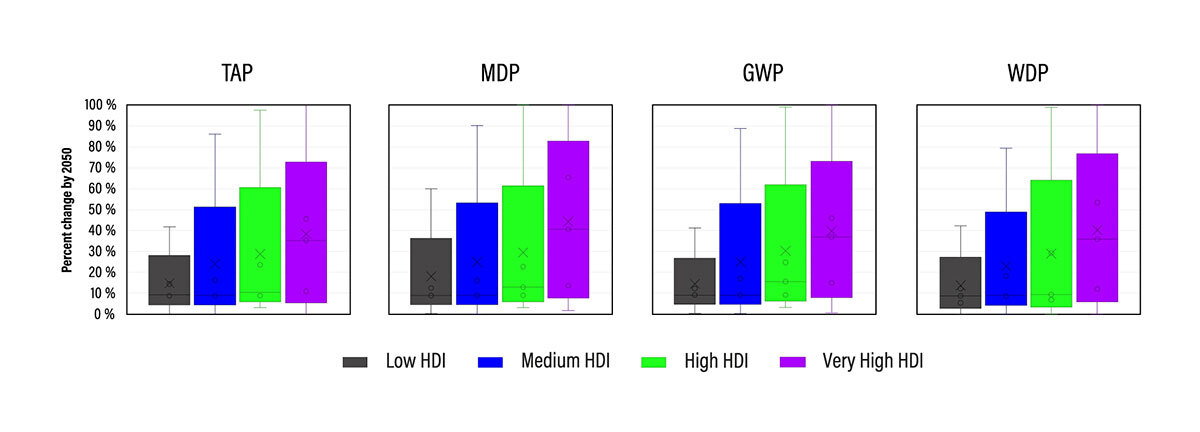
Conclusions
Material circularity alone is insufficient to resolve the metabolic rift in Montreal’s construction sector. Developing other circular economy strategies such as extending the service life of buildings and infrastructure and reducing absolute material consumption are necessary, and material circularity should be seen as complementary to those endeavours. Our findings emphasize the importance of systems-thinking and understanding the complexities of global supply chains and urban consumption in addressing environmental crises. More research is needed to integrate strategies such as extending service life in the construction sector and shifting the materiality increase towards degrowth-compatible narratives to achieve environmental sustainability.
This research was funded by the construction circular economy living lab of the Centre for Intersectoral Studies and Research on the Circular Economy (CERIEC), École de technologie supérieure (ÉTS), and the Canada Research Chair on Measuring the Impact of Human Activities on Climate Change.
Suggested reading:
Elliot, T., Vigier, M., & Levasseur, A. (2024). Spatio-temporal metabolic rifts in urban construction material circularity. Resources, Conservation & Recycling, 205, 107567.
Related papers:
Elliot, T. and Levasseur, A. (2022). System dynamics life cycle-based carbon model for consumption changes in urban metabolism. Ecological Modelling, 473, 110010.
Elliot, T., Carter, A., Ghattuwar, S., & Levasseur, A. (2023). Environmental impacts of road pavement rehabilitation. Transportation Research Part D: Transport and Environment, 118, 103720.



